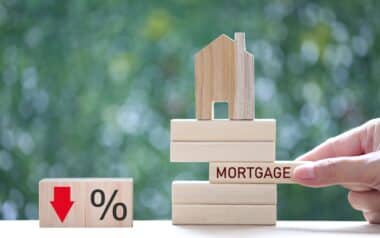The latest data published recently by the Office for National Statistics (ONS) reveals a significant rental costs rise across the UK last February, while price adjustments in the housing market stabilised.
UK Rental Costs Skyrocket
The report shows that in the 12 months to February this year, the average private rental cost across the UK increased by 9%. This is significantly higher than the 8.5% year-on-year growth seen during January, and marks the strongest annual increase in rental costs since the data series began tracking this metric in January 2015.
Over £1,000 Monthly Average Rent
The current state of the UK rental market highlights a significant affordability crisis, with over 50% of rented homes located in areas where the average monthly rent exceeds £1,000. This reality highlights a high demand among renters, pushing the boundaries of what many can afford.
According to Zoopla, the number of properties available to landlords in the higher rent bracket has almost doubled in the last five years. Since January 2020, rents have surged by 29%, resulting in an average rent of £1,223.
“The last two years have been characterized by an ongoing imbalance between rental supply and demand… Only a rapid and sustained expansion in rented housing will start to improve affordability for UK renters.” said Richard Donnell, Executive Director at Zoopla.
The report highlights significant changes, particularly in the East of England, where 70% of rental properties now charge rents of £1,000 or more. Similar trends are also being observed in the South-East and other regions beyond the South of England, which is exacerbating the issue of rental affordability.
In Scotland, the north-west, East Midlands and West Midlands, one fifth of rented homes are located in markets where the average rent is £1,000 a month. This figure drops to just 4% in Yorkshire and the Humber, and there are no markets over this level in the north-east.
Nevertheless, annual rental inflation has fallen to 7.8%, the lowest level recorded for two years. Estate agents are currently offering an average of 12 homes, a fifth more than last year, but 28% less than pre-pandemic levels. Each listed property currently receives an average of 15 enquiries, down from 20 in 2021, but twice as many as before the pandemic.
In Zoopla’s view, the slowdown in rental growth is “mainly due to weakening demand and increasing affordability pressures, rather than a major expansion in supply”. For instance, in London, growth has fallen from 15.3% a year to 5.1%. Meanwhile, demand has fallen by 30%, while supply has increased by the same proportion.
In Manchester and Birmingham, average annual rents are now 9.6% and 8.6% higher than a year ago. The only region where inflation remains in double digits is Scotland at 11.6%.
Housing Prices Remain Flat
Contrasting with the rental market, house and property sales prices fell slightly in the year to January 2023. To be more specific, the ONS reported that house prices fell by 0.6% over this period.
Though still a fall, this change marked a smaller reduction compared to the 2.2% fall recorded in December 2022. As a matter of fact, at 0.6%, January’s year-on-year decline is the smallest seen since August 2023.











